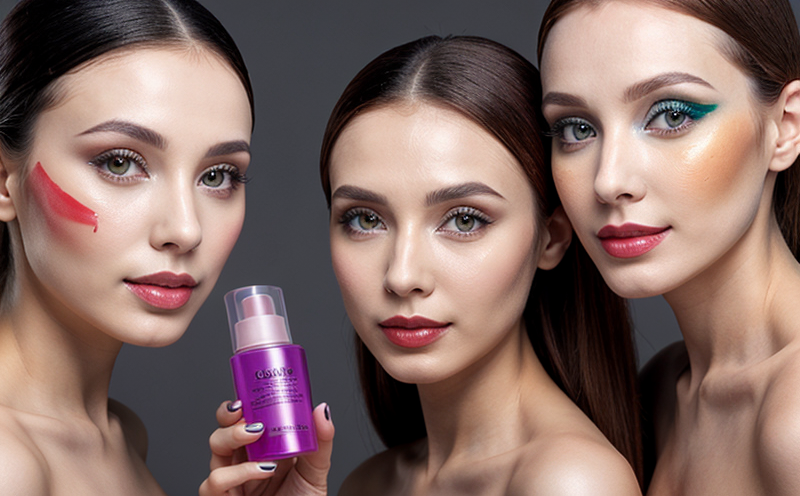Reproductive Toxicity Testing in Cosmetic Raw Materials
In the cosmetic industry, ensuring product safety is paramount. Reproductive toxicity testing plays a critical role in identifying potential hazards associated with cosmetic raw materials that may affect reproductive health. This service ensures compliance with international regulations and standards aimed at protecting consumers.
Reproductive toxicity refers to any adverse effects on the male or female reproductive system, including developmental effects on embryos, fetuses, and offspring resulting from parental exposure to a chemical substance during reproduction. The testing is crucial not only for consumer safety but also for brand reputation and regulatory compliance.
The testing process involves several steps, starting with selecting appropriate animal models based on the type of raw material (e.g., preservatives, pigments, fragrances). Each test requires a detailed protocol to ensure accurate results. For example, rodent models are often used in reproductive toxicity studies because they have shorter gestation periods and relatively large litters compared to other species.
Once the model is selected, a specific number of animals undergo controlled exposure to the substance under investigation. This can be achieved through various routes such as oral administration, dermal application, or inhalation, depending on how the raw material will be used in cosmetics. The study period varies according to the type of test being conducted; for instance, prenatal developmental toxicity tests typically last up to 21 days.
The primary goal is to observe and document any signs of reproductive toxicity, which can include but are not limited to reduced fertility rates, increased embryonic or fetal mortality, malformations, or changes in the offspring's development. Data collected during these studies form the basis for evaluating whether a substance poses risks to human health.
Compliance with international standards is essential when performing reproductive toxicity tests on cosmetic raw materials. Eurolab adheres strictly to ISO 10762, which provides guidelines for testing of chemicals used in cosmetics and toiletries regarding their potential effects on male or female fertility and on the development of the embryo, fetus, and newborn.
Another important standard is OECD (Organization for Economic Co-operation and Development) Test Guideline 415, which specifies procedures for conducting reproductive toxicity studies. These guidelines help ensure consistency across laboratories worldwide so that results can be compared reliably.
| Test Phase | Description |
|---|---|
| Prenatal Developmental Toxicity Test (TDlo) | This test evaluates the effects of a substance on the developing fetus after maternal exposure. It includes detailed examinations of fetal morphology, organogenesis, and postnatal survival. |
| Reproductive Toxicity Test (RTOX) | This comprehensive study assesses both reproductive performance (fertility) and developmental outcomes in two generations of animals exposed to the substance. |
Scope and Methodology
The scope of our reproductive toxicity testing service covers a wide range of cosmetic raw materials, including pigments, preservatives, fragrances, and other additives. Our methodology follows stringent protocols designed to minimize animal suffering while ensuring accurate results.
- Selection of appropriate animal models based on the nature of the test substance
- Exposure of selected animals via relevant routes (oral, dermal, inhalation)
- Data collection encompassing reproductive parameters and developmental outcomes
- Compliance with international standards such as ISO 10762 and OECD Test Guideline 415
| Test Parameters | Acceptance Criteria |
|---|---|
| Fertility Indices | Percentages of fertile pairs should be within acceptable ranges defined by regulatory bodies. |
| Embryonic/Fetal Losses | The number of lost embryos/fetuses must fall below specified thresholds to indicate no significant impact on reproduction. |
Benefits
- Ensures compliance with international standards and regulations, enhancing brand reputation
- Reduces risks associated with potential reproductive toxicity in cosmetic products
- Facilitates smoother product launch processes by addressing safety concerns early on
- Provides comprehensive data supporting informed decision-making for R&D teams
- Minimizes the possibility of recalls or legal actions due to unsafe ingredients
- Saves time and resources by identifying problematic substances during development stages rather than later in production cycles
Eurolab Advantages
At Eurolab, we pride ourselves on providing top-tier reproductive toxicity testing services tailored specifically to the needs of the cosmetic industry. Our expertise lies in delivering accurate and reliable results using cutting-edge technology and experienced personnel.
- State-of-the-art facilities equipped with advanced analytical instruments
- A team of highly qualified toxicologists and scientists specializing in reproductive health research
- Comprehensive support services including consultation on study design and interpretation of results
- Fast turnaround times without compromising quality or accuracy





